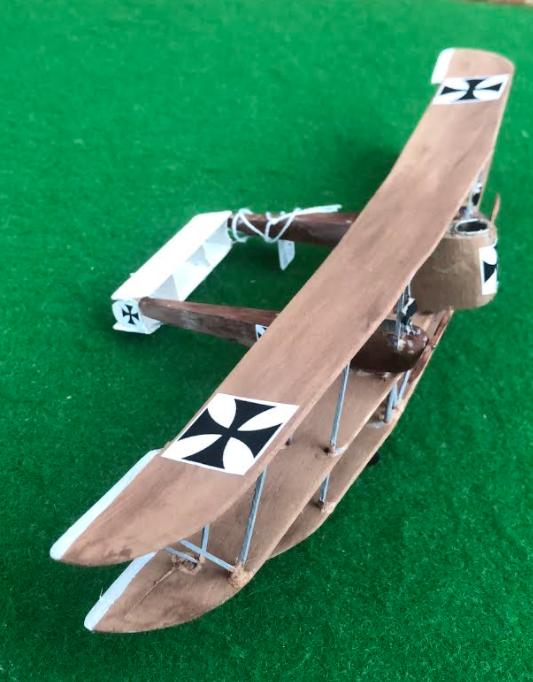Lloyd L 1/11 or 40.08 - Austro-Hungarian
The Lloyd 40.08 Luftkreuzer (Sky Cruiser) was a three engine triplane bomber type built during World War I. The design was proven to be ineffective and development did not proceed past the prototype stage.
In August 1915, the Austro-Hungarian Imperial and Royal Aviation Troops (Luftfahrttruppen) awarded funding to Lloyd for construction of a new heavy bomber that could carry a 200 kg (440 lb) bomb-load and have endurance of at least 6 hours. The aircraft was to be powered by one powerful engine in a pusher configuration housed in a central nacelle and two smaller engines mounted in twin booms on either side. In January 1916, Lloyd received specifications and drawings for a large triplane that was to be known as the Luftkreuzer.
The unequal span triplane had the middle wing mounted to the lower part of the main fuselage and booms, with the upper and lower wings supported by wire braced inter-plane struts. The centre section housed a 300 hp Austro-Daimler V-12 water-cooled engine, driving a wooden two-bladed pusher propeller. The twin booms were constructed of modified Lloyd C.II fuselages with 160 hp Austro-Daimler 6 water-cooled in-line engines, and two bladed wooden propellers. Directly below the main section between the middle and lower wings, was a fully enclosed compartment with windows for the bombardier. The most forward section between the middle and upper wings also had windows and enough space for two air gunners with excellent fields of fire in all directions and was also equipped with a spotlight. The pilots position was set in the rear of the centre fuselage close to the pusher propeller and had very poor forward visibility. Defensive armament consisted of two Schwarzlose M7/12 machine guns in the gunners station and one in each boom.
Testing of the 40.08 Luftkreuzer began on 8 June 1916 at the airport in Aszód. It was immediately clear that the machine suffered from a centre of gravity that was too high and too far forward.


